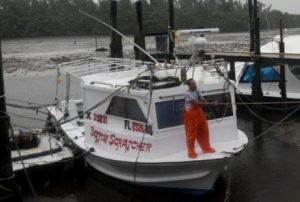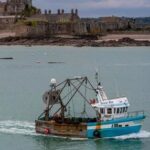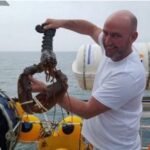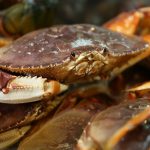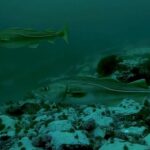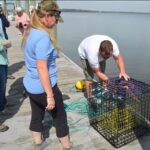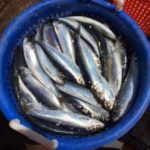Tag Archives: Monterey Bay Aquarium’s Seafood Watch
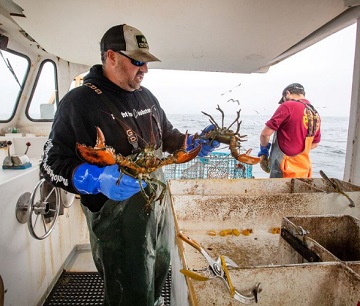
Canadian and American lobster industry confronts ‘ropeless’ traps after whale entanglements
Injuries to endangered North Atlantic Right Whales ensnared in fishing gear have fueled a prominent campaign by environmental groups to pressure the industry to adopt on-demand equipment that only suspends ropes in the water briefly before traps are pulled from the water. To address the problem, the U.S. and Canadian governments have imposed new regulation on lobster and crab fisheries in recent years, including the use of weak links in rope that break if a whale swims through, color-coded rope for tracing, adding more traps per buoy line, and zone closures during whale migration. Washington and Ottawa are now promoting ropeless fishing as a possible long-term solution. But lobstermen, particularly in Maine where 80% of U.S. lobster is caught, are not enthusiastic. >click to read< 08:49
Four B.C. chinook and coho fisheries on “avoid” red list with ten others having “some concerns,”
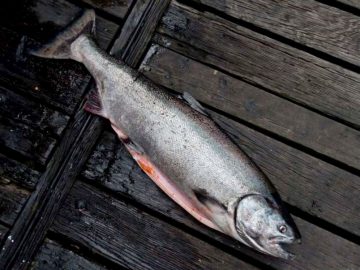 In the latest update to the Monterey Bay Aquarium’s Seafood Watch program, four B.C. chinook and coho fisheries were listed as “avoid.” Ten others were identified as having “some concerns,” but remain listed as “good alternatives.” The four fisheries newly labelled as “avoid” are all in southern B.C. — chinook caught off the south coast using purse seine (a net that is drawn into the shape of a purse to catch large schools of fish) or drift gillnets (vertical sheets of net with certain sizes of netting to capture specific types of fish), and coho salmon in the same region using the same two methods. According to Jeffery Young, a science and policy adviser with the David Suzuki Foundation, the rating is not necessarily a criticism of a fisheries’ practices, but reflects that the salmon targeted by these fisheries are in serious decline. Read the story here 10:15
In the latest update to the Monterey Bay Aquarium’s Seafood Watch program, four B.C. chinook and coho fisheries were listed as “avoid.” Ten others were identified as having “some concerns,” but remain listed as “good alternatives.” The four fisheries newly labelled as “avoid” are all in southern B.C. — chinook caught off the south coast using purse seine (a net that is drawn into the shape of a purse to catch large schools of fish) or drift gillnets (vertical sheets of net with certain sizes of netting to capture specific types of fish), and coho salmon in the same region using the same two methods. According to Jeffery Young, a science and policy adviser with the David Suzuki Foundation, the rating is not necessarily a criticism of a fisheries’ practices, but reflects that the salmon targeted by these fisheries are in serious decline. Read the story here 10:15
Why This San Diego Fisherman is Selling Pacific Bluefin Tuna For $2.99 A Pound
 “It’s a very difficult task to count animals as elusive as tuna,” says Craig Heberer, NOAA. But commercial fishermen like David Haworth, who brought this pile of small, steely gray bluefin to market, say that assessment doesn’t match up with what they’re seeing in the water: a record-smashing abundance of Pacific bluefin tuna. “Our spotter pilots that have been fishing with us for up to 40 years here say they’re seeing the most bluefin they’ve ever seen in their lifetimes, and our government is not documenting any of it,” says Haworth. Read the rest here
“It’s a very difficult task to count animals as elusive as tuna,” says Craig Heberer, NOAA. But commercial fishermen like David Haworth, who brought this pile of small, steely gray bluefin to market, say that assessment doesn’t match up with what they’re seeing in the water: a record-smashing abundance of Pacific bluefin tuna. “Our spotter pilots that have been fishing with us for up to 40 years here say they’re seeing the most bluefin they’ve ever seen in their lifetimes, and our government is not documenting any of it,” says Haworth. Read the rest here
“Red Listed” – Louisiana unhappy with California group’s ‘avoid’ shrimp label
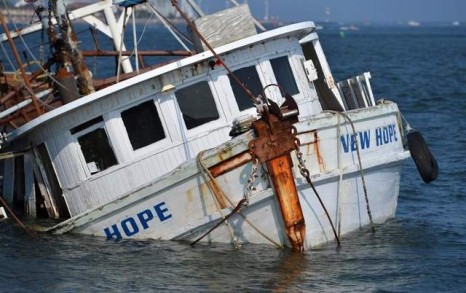 “The socioeconomic impacts to our shrimpers from this designation has the potential to cripple families and coastal communities who have endured repeated disasters, including Hurricanes Katrina, Rita, Ike, Gustav and Isaac, the BP oil spill and the disappearance of our coast,” Barham wrote. more@houmatoday 08:29
“The socioeconomic impacts to our shrimpers from this designation has the potential to cripple families and coastal communities who have endured repeated disasters, including Hurricanes Katrina, Rita, Ike, Gustav and Isaac, the BP oil spill and the disappearance of our coast,” Barham wrote. more@houmatoday 08:29

































